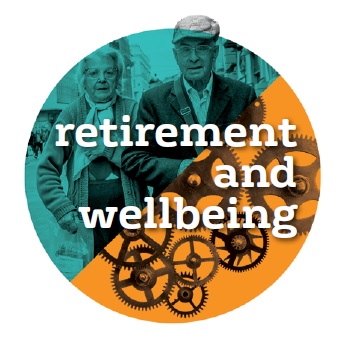 Following our international systematic review, and in light of the government’s paper, Fuller Working Lives, published earlier this month, we look at what it means for people’s wellbeing to retire.
Following our international systematic review, and in light of the government’s paper, Fuller Working Lives, published earlier this month, we look at what it means for people’s wellbeing to retire.

Download the retirement and wellbeing briefing.
If you think retirement is an automatic ticket to a happier life, our new briefing might give you pause for thought.
The systematic review looked at the global evidence base of mental health and wellbeing in the UK and similar countries.
The way we retire matters for our mental health and wellbeing. And it affects us differently depending on who we are, what type of job we are leaving, and whether we have a choice in our retirement plan.
A key finding for employers is that ‘bridging jobs’ could make retirement happier. Suggesting companies should consider supporting older workers to ‘wind-down’ into retirement with the choice of bridging jobs or reduced working hours.
But the most important factor is control over retirement timing. Being forced to retire due to restructuring or ill health is negative for mental health and wellbeing. Those who take up bridging jobs because of financial strain showed lower wellbeing.
Having a support network was also an important factor. One fascinating study in the review looked at the retirement transition and adjustment process. It found certain patterns in terms of psychological wellbeing (PWB), these were:
- Maintaining pattern: individuals cope with important changes in their lives by maintaining their familiar patterns of thought, behaviour, and relationships. This is the majority pattern (almost 70%). This group was composed of those who had a bridge job, had planned more actively for their retirement, were married and had a spouse who was present and not working.
- Recovery pattern: for those who were not satisfied with their career jobs, retirement can act as a way out from unpleasant work roles. For these kind of retirees, retirement is shown to be associated with an improved psychological wellbeing. This is a small minority pattern (under 5%). This group were was composed of those who retired from physically demanding, stressful, less satisfying jobs.
- Adjusting pattern: while initial retirement process resulted in worsening PWB, over time people adjust and report even better PWB compared to baseline. This is a significant minority pattern (over 20%). This group consisted of, those who had worsening health during retirement transition, had an early retirement and had unhappy marriage.
Since the government is already encouraging workers to prolong their working life, our evidence suggests that this might be accomplished by measures to support older workers with health problems who wish to stay longer in the labour market.
Measures to promote workers’ control over their retirement timing might include more support for pension saving (particularly for low earners), alongside better information
about retirement planning. Other initiatives within organisations might include late career reviews, which encourage planning for retirement.
